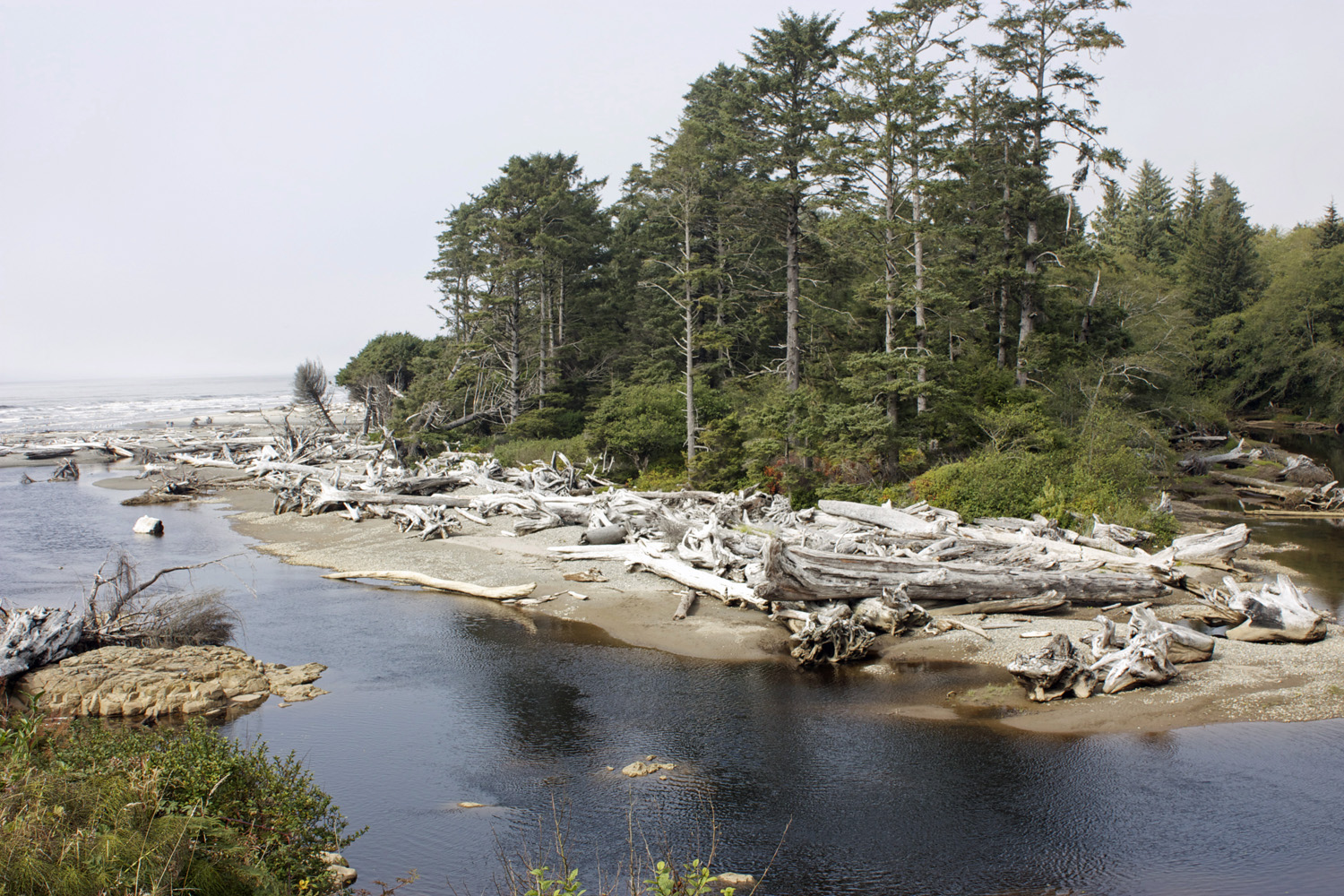Olympic National Park
Located: Washington - Established: June 29, 1938
The Park: You’ll need more than a day to experience the three distinctively different ecosystems Mother Nature has packaged into this amazing park.
Lake Crescent Lodge canoes
Ecosystems. At the pinnacle of the Olympics’ three primary ecosystems, you’ll find the glacier-capped peaks of Mt Olympus and the surrounding mountains, which make up the majority of the park’s wilderness area.
The second ecosystem is found within the temperate Hoh and Quinault Rain Forests. These areas of the park are comprised of a lush landscape of trees, mosses and ferns, which are recipients of over 12 feet of annual rainfall.
Olympic coastline
The park’s third ecosystem includes a 73-mile stretch of wild coastline. Here you will experience sandy beaches, giant “sea stacks” (islands just offshore) and the sun bleached driftwood logs that have accumulated along the shoreline.
Undamming the Elwha River. One of the most ambitious projects ever completed within the confines of a National Park was the removal of two dams that were built in the early 1900’s along the Elwha River within Olympic National Park. The demolition of the Elwha and Clines Canyon Dams began in 2011 and the project has been successful in restoring salmon to the river while revealing sacred Indian sites that were once covered by water.
Getting there: Olympic is located off Hwy 101 in the northwestern section of Washington due west of Seattle and approximately 120 miles northwest of the state capital of Olympia.
When to visit: Open year round, Olympic is mostly visited between the months of June through September when the weather is most desirable. During the winter months, some of the park’s roads and facilities are closed due to weather.
Wispy cloud floating over Lake Crescent
What to do: Exploring the park’s three different ecosystems is a “must do” to fully appreciate the diversity of Olympic. Spend some time atop the park’s mountains, noodle along the sandy beaches and be sure to explore the rainforests.
For the day hiker, Olympic offers an abundance of trails that will have you trekking through the temperate rainforests, strolling along the coastal beaches or hiking up into the highlands. For a more rigorous experience, Olympic has over 100 wilderness campsites available to those who wish to explore the backcountry.
There numerous kayaking and canoeing options in Olympic along with tide pooling, fishing wildlife viewing.
Where to stay: Campsites abound in the mountains, along the coast or amongst the mosses and ferns in the park’s famous Hoh Rainforest. However, if you go to Olympic to relax, be sure to book a room at the Sol Duc Hot Springs Resort and soak in a mineral hot spring bath.
Cheers to our 19th park visit!
Memorable moment: We opted to stay at the Lake Crescent Lodge, which turned out to be a most delightful experience. The accommodations were adequate, however, the dining was beyond a doubt the best we’ve ever experienced in all of the park’s we’ve visited! The wine was excellent as well!
Trivia: Olympic was almost named Elk National Park because it protects the world’s largest herd of Roosevelt Elk.
Banner: Mossy grounds of the Hoh Rainforest.
Experience these Check List:
- Stop by any of the park's three Visitor Center
- Spend the day in the Hoh Rainforest
- Observe the sea stacks while strolling the coastal beaches
- Trek a trail on Hurricane Ridge
- Hike to Marymere Falls
- Soak at Sol Duc Hot Springs Resort





